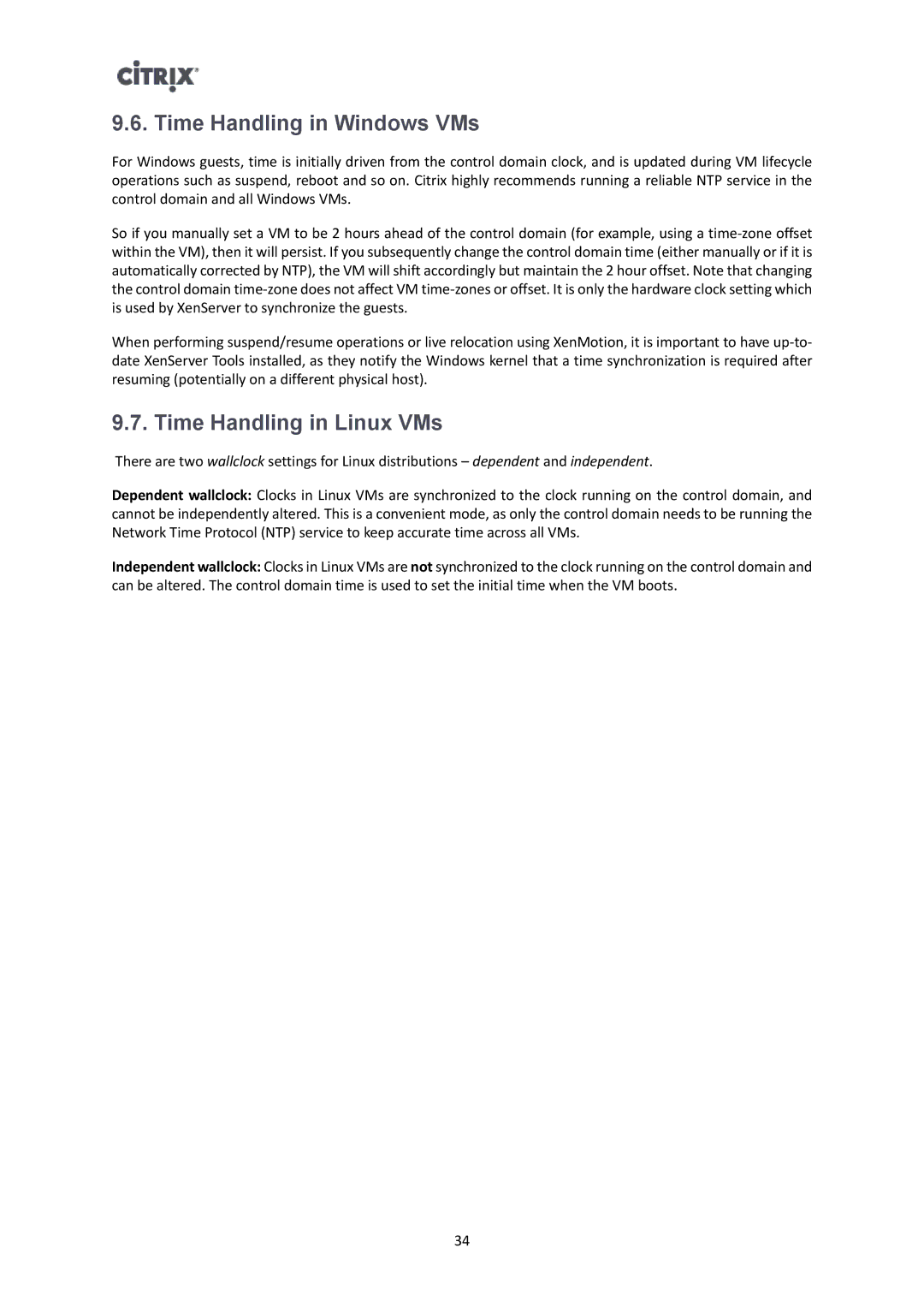9.6. Time Handling in Windows VMs
For Windows guests, time is initially driven from the control domain clock, and is updated during VM lifecycle operations such as suspend, reboot and so on. Citrix highly recommends running a reliable NTP service in the control domain and all Windows VMs.
So if you manually set a VM to be 2 hours ahead of the control domain (for example, using a
When performing suspend/resume operations or live relocation using XenMotion, it is important to have
9.7. Time Handling in Linux VMs
There are two wallclock settings for Linux distributions – dependent and independent.
Dependent wallclock: Clocks in Linux VMs are synchronized to the clock running on the control domain, and cannot be independently altered. This is a convenient mode, as only the control domain needs to be running the Network Time Protocol (NTP) service to keep accurate time across all VMs.
Independent wallclock: Clocks in Linux VMs are not synchronized to the clock running on the control domain and can be altered. The control domain time is used to set the initial time when the VM boots.
34
